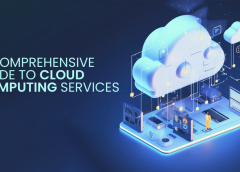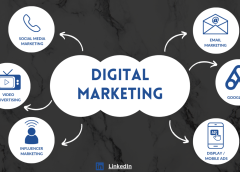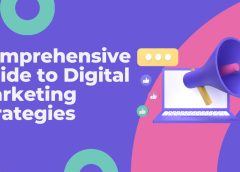In the digital era, where data reigns supreme, businesses and individuals alike are constantly seeking efficient and scalable solutions to manage their information. Enter cloud computing – a transformative technology that has revolutionized the way we store, access, and process data. Whether you’re a seasoned IT professional or a curious entrepreneur, understanding the essentials of cloud computing is crucial. In this guide, we’ll explore everything you need to know before venturing into the cloud.
Understanding Cloud Computing
At its core, cloud computing refers to the delivery of computing services – including servers, storage, databases, networking, software, analytics, and more – over the internet (“the cloud”). Instead of owning and maintaining physical infrastructure, users can access resources on-demand from cloud service providers. This flexible, pay-as-you-go model offers unparalleled scalability and cost-efficiency, making it an attractive option for businesses of all sizes.
Essential Considerations Before Choosing a Cloud Computing Platform Before embarking on your cloud journey, there are several critical factors to consider:
Security: Ensuring the security of your data is paramount. Evaluate the security measures implemented by cloud providers, including data encryption, access controls, and compliance certifications (such as GDPR or HIPAA).
Cost: While cloud computing offers cost savings compared to traditional infrastructure, it’s essential to understand pricing models and anticipate potential hidden costs, such as data transfer fees and storage overages.
Performance: Assess the performance capabilities of different cloud providers, including network latency, uptime guarantees, and scalability options to meet your specific workload requirements.
Compliance: Depending on your industry and geographic location, you may be subject to regulatory compliance requirements. Choose a cloud provider that adheres to relevant regulations and offers compliance support.
Data Portability: Consider the ease of migrating data between cloud platforms and the potential vendor lock-in risks. Opt for open standards and interoperable solutions to maintain flexibility.
Open-Source Cloud Computing Platform Databases
Open-source databases play a vital role in cloud computing, providing users with cost-effective and customizable solutions. Some popular open-source cloud computing platform databases include:
MySQL: A widely-used relational database management system known for its performance, reliability, and ease of use.
PostgreSQL: An advanced open-source database with support for ACID transactions, JSONB data type, and robust extensibility.
MongoDB: A NoSQL database renowned for its flexibility, scalability, and document-oriented data model.
Apache Cassandra: A distributed database designed for scalability and high availability, ideal for handling large volumes of data across multiple nodes.
These open-source databases empower users to build resilient and scalable cloud-native applications while maintaining control over their data and infrastructure.
Security Laws and Regulations in the Cloud
Security remains a top concern for organizations migrating to the cloud. To safeguard sensitive data and maintain compliance, various security laws and regulations have been implemented:
General Data Protection Regulation (GDPR): Enforced by the European Union, GDPR mandates strict data protection requirements, including consent mechanisms, data encryption, and breach notification protocols.
Health Insurance Portability and Accountability Act (HIPAA): HIPAA sets standards for protecting sensitive patient health information (PHI) and requires healthcare organizations to implement stringent security measures when storing and transmitting data in the cloud.
Federal Risk and Authorization Management Program (FedRAMP): Governed by the U.S. government, FedRAMP provides a standardized approach to security assessment, authorization, and continuous monitoring for cloud products and services used by federal agencies.
By adhering to these security laws and regulations, cloud providers demonstrate their commitment to protecting customer data and maintaining trust in the digital age.
Harnessing the Power of Cloud Computing
Beyond the fundamental considerations and regulatory compliance, harnessing the full potential of cloud computing involves leveraging its diverse array of services and features. Here are additional insights to propel your cloud journey forward:
- Scalability and Flexibility: One of the primary advantages of cloud computing is its ability to scale resources on-demand. Whether your workload experiences sudden spikes or requires steady growth, cloud platforms offer elasticity to accommodate changing needs. Take advantage of auto-scaling features to dynamically adjust resources based on demand, optimizing performance and minimizing costs.
- Disaster Recovery and Business Continuity: Cloud computing offers robust disaster recovery solutions to safeguard your data against unforeseen events. Implement data redundancy across multiple geographic regions to ensure high availability and resilience. Leverage backup and replication services to create comprehensive disaster recovery strategies, minimizing downtime and ensuring business continuity in the face of disruptions.
- Advanced Analytics and Machine Learning: Cloud platforms provide access to powerful analytics and machine learning tools that enable organizations to extract valuable insights from their data. Harness the capabilities of managed services such as Amazon Web Services (AWS) SageMaker, Google Cloud AI Platform, or Microsoft Azure Machine Learning to build predictive models, automate processes, and drive data-driven decision-making.
- DevOps and Continuous Integration/Continuous Deployment (CI/CD): Embrace DevOps principles and CI/CD pipelines to streamline software development and deployment processes in the cloud. Leverage infrastructure-as-code (IaC) tools like Terraform or AWS CloudFormation to automate infrastructure provisioning and configuration, promoting consistency and repeatability. Implement containerization using platforms like Docker and Kubernetes for enhanced portability and scalability of applications.
- Serverless Computing: Explore the paradigm of serverless computing, where cloud providers manage the underlying infrastructure, allowing developers to focus solely on writing code. Services such as AWS Lambda, Google Cloud Functions, and Azure Functions enable event-driven architectures, where code executes in response to triggers, optimizing resource utilization and reducing operational overhead.
Conclusion
As businesses increasingly rely on cloud computing to drive innovation and agility, understanding the nuances of this transformative technology is essential. By considering factors such as security, cost, performance, and compliance, users can make informed decisions when selecting a cloud computing platform. Open-source databases offer flexibility and customization, while adherence to security laws and regulations ensures the protection of sensitive data. With these insights in mind, navigate the cloud computing landscape with confidence and embrace the future of digital transformation.






